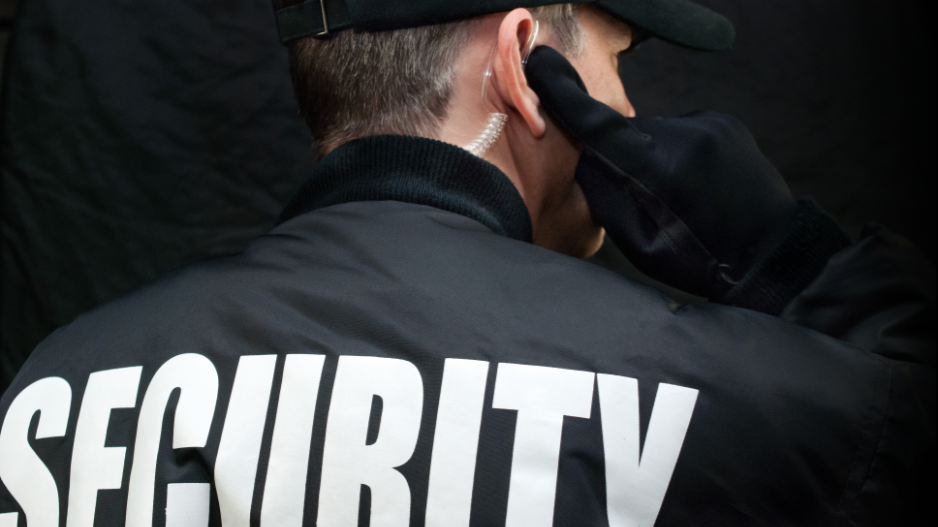In the wake of the November 13 terrorist attacks in Paris, businesses and organizations might be wondering if they’re doing all they can to prevent or mitigate the risk of a workplace shooting spree or terrorist attack.
Many in B.C. already have safeguards in place, according to local security firms. In many cases, these businesses and organizations adopted all-hazard emergency plans in the lead-up to the 2010 Winter Olympics.
Read: RCMP seeks terrorism intelligence from local businesses
At last month’s LNG in BC conference, for example, everyone attending the event was required to pass through metal detectors and open their bags and briefcases for security guards.
Read: B.C. tech experts focus on the future of security
That routine screening thwarted one of the suicide bombers from getting into the Stade de France, where the casualties might have been worse had a security guard not detected a suicide vest worn by one of the bombers. None of the suicide bombers who were apparently targeting the stadium made it inside, where a soccer match was underway.
But terrorists armed with machine-guns did get into the Bataclan theatre during a heavy metal concert, where they killed 89 people, which raises questions about the level of security at the venue.
There are dozens of security firms in Vancouver that can help businesses and institutions assess whether they have the proper safeguards and protocols in place in the event of a catastrophic event, whether it’s an earthquake or a workplace shooting.
With the spread of Islamic extremism, terrorism is one more threat that needs to be considered.
“To think Canada is immune is just nonsense,” said Royston Colbourne, vice-president for risk mitigation at Xpera Risk Mitigation and Investigation.
Kamran Bokhari,an expert on countering violent extremism who lectures on national security for the University of Ottawa, said Canada is not as big a target for large ISIS-planned attacks as France, Russia, the U.S., Turkey and Iran.
But he said there is a risk from homegrown freelance jihadists.
“There is a non-trivial number of people who hold views that are similar to ISIS,” he said. “The question is: are they going to act on that? And if they do act upon it, then what is their capability?”
In the wake of the Paris attacks, Don MacAlister, chief operating officer for Paladin Security, expects many businesses and organizations will be beefing up their all-hazard plans, including improved screening at sporting events, concerts and other public events that draw large crowds.
“I think, increasingly, you’re going to see that at all public events,” he said.
But what about schools, workplaces and restaurants? How does a business owner or head of a public institution prevent a gunman from storming a classroom, workplace or restaurant?
There are some security measures that businesses and institutions can include in their emergency plans that could help minimize the risks. One of them is an active shooter plan. Many schools, universities, hospitals and other public institutions already have these plans in place, MacAlister said.
“Most organizations now are starting to build active shooter planning into their emergency management framework. So just as they plan for a fire or a flood or a bomb threat, increasingly businesses are starting to plan for active shooter scenarios.”
In the past, shootings in Canada have tended to involve disgruntled employees. But an active shooter plan could also help minimize casualties in the event of terrorist attacks like the ones that occurred in Paris.
As part of an all-hazards plan, security firms can assess a business or organization to see if there are safeguards that can be taken. Such plans would consider whether a business has a quick escape route for employees or customers. It might also consider whether the doors of offices and classrooms can be locked and barricaded and whether there are places where people can hide.
“Increasingly you’re seeing universities starting to be able to build rooms in which people can barricade themselves,” MacAlister said.
He added that businesses and institutions should consider security measures in the design of their buildings.
“We build buildings to mitigate the risks of fire. We build buildings to mitigate the risk of earthquakes.
“We could build buildings to mitigate the risk of some of these more human-induced activities in terms of locking off areas or creating spaces for people to secure themselves away and making sure the staff are familiar with the exit routes that they would need in an active shooter [situation] in the same way they would in a fire or another emergency.”
As for public transit, Bokhari said jihadists are “fixated” on transportation targets. He thinks airport security in Canada is good.
“I’m not so worried about airports as I am, say, [about] buses, trains.”
Colbournesaid the security provided on Metro Vancouver’s public transit systems is “probably appropriate where we are at the moment.”
“The question I would ask is: What contingency do you have to ramp that up if the risk goes up? The risk might rise, literally, overnight as a result of intelligence, as a result of some acts, as the result of something the Canadian military does somewhere in the world.
“Do you have a contingency for moving to the next level? Because it you’re starting to think about it once the risk has been identified, then you’re behind the game. So even if you haven’t got things in place, you should have a plan that is scalable.”
@nbennet_biv




